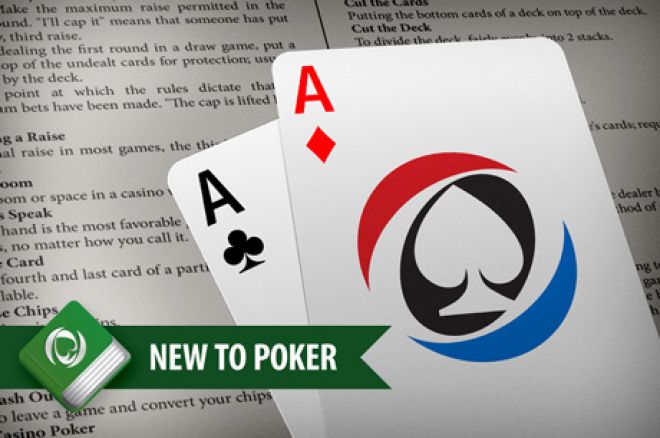What Does Call Raise Check And Fold Mean In Poker
This strategy column, and many like it, are featured in every issue of Card Player magazine. Subscribe today to get 26 issues delivered to your home each year!
A check-raise is made when a player checks on the first opportunity to bet and later raises any subsequent bet in the same betting round. Check - place no bet, only an available option when no one has bet before you. Call - stay in the hand by matching someone's bet. Raise - Bet more than what the previous person bet, and now they must match your bet or fold, or raise (re-raise they call it) if they're brave.
While playing $20-$40 limit hold’em, you pick up the Q Q in middle position. You open-raise, the button three-bets, and you go to the flop heads up. The flop comes 10 7 3. You check, and, as expected, the button bets.
You figure that he has a pretty wide range here, including several pocket pairs, A-K, A-Q, and perhaps some occasional whimsical adventures. You decide to check-raise, for several reasons:

• You are way ahead of most of his range.
• You are out of position, which normally means that you have to take some chances to gain full value from your hand. If you just call here and check the turn, he will often just take a free card, and you will fail to profit when you are ahead. You want him to pay to draw out.
• Of course, you also may be behind, in which case you will most likely be three-bet, or raised on the turn. At that point, if it happens, you will have to assess your opponent and make a decision about whether to continue.
He calls your check-raise, and the turn is the 3. This seems to be as good a turn card as you could hope for, and you bet. He calls.
You probably are thinking, “No ace, no king, no ace, no king,” when the dealer burns and turns the A. Now what? If your opponent has a dreaded ace, you are going to lose. Your first thought is probably to check and call. But what if, instead of an ace, he has pocket jacks or even a loose hand like K-10 suited? He will probably check it back, and you will lose the chance to gain a bet from a crying call. You want to win those bets when they are available.
If you bet, however, he might raise. Then, you could lose two bets if you call, and kick yourself for not checking. Or, you could fold, in which case you lose if he was making a bluff-raise.
The right answer depends (surprise!) on how you assess your opponent. Against most opponents, who are reasonable, straightforward to bet, and if raised, fold. Very few opponents are capable of making a bluff-raise here. You already have shown considerable strength, the pot is fairly large, and he should be expecting a call. Plus, you bet fearlessly, which has to alarm him. After all, unless he has one, the ace should scare him as much as it does you.
However, some opponents are highly creative, and may be capable of making just such a bluff. Luckily, they are also the ones who will probably put in a bluff-bet if you check, hoping to convince you to fold. Against one of them, check and call. In the long run, you probably will pick off enough bluffs to offset the bets that you may lose by not betting when you have the best hand.
This choice — bet and fold to a raise, or check and call — comes up often when you are heads up and out of position on the river. You have a good hand, but the river card may have beaten you. You don’t want to give up the calls when you are ahead, but also don’t want to lose two bets when you got unlucky. Against average opponents, bet and fold to a raise. Against tough, tricky opponents, check and call.
Think through these two choices before you act. Avoid the other two: betting and calling the raise, or checking and folding. Remember, by checking, you are often inviting even some usually honest players to attempt a bit of larceny, or to somehow think their second-best hand is good, so you have to make that river call.
Another example: Later in the same game, you happily see red aces in early position before the flop. After one fold, you open-raise, and get four callers: a middle-position player, the button, and both blinds. The flop is 9 7 4. So far, so good. The blinds check, you bet, the middle-position player calls, and the button raises. Both blinds fold, you three-bet, and the other two players call.
The turn is the J. This makes a straight if either opponent started with 10-8, but you can’t worry about that. You bet, the middle position player folds, and the button calls.
The river is the disappointing 2. Was the button raising for a free card on the flop with a flush draw, or does he have a hand like 10-9 or even J-10, which flopped a gutshot with two overcards? If he has the flush and you bet, you will probably get raised. And, of course, you have pocket aces, and it is tough to lay them down. At least if you call, you can show them, and everyone can see how unlucky you were. Despite this pity factor, you should, of course, quietly fold to the raise.
All of this should not affect your primary choices. Against most players, bet, hoping to pick up a call from a smaller pair. Against tough, tricky players, check and call, hoping to pick off a bluff. Don’t forget that you would have made the same series of plays with the A K, so the flush card on the river can look as scary to your opponent as it does to you.
But what if you don’t know the players? First, you should always have some idea of how everyone plays, even if you just watched one round before posting to play. But worst case, it is always safe to check and call, even though you may have lost a bet if it goes check, check. I hope that this is an unusual default position, because betting is far more profitable against most players.
Conclusion: Bluff-raises on the river are very rare at almost every level of play, but calling river raises is quite common. After all, the pot usually is large, it costs only one bet to call, and limit poker doesn’t reward heroic river lay-downs. Nevertheless, you ought to be able to assess your opposition well enough to understand who is capable of making huge, expensive, and generally unsuccessful bluff-raises, and who is not. Play accordingly, and you will collect all the bets you are entitled to, while not losing extra ones.

Barry Tanenbaum is the author of Advanced Limit Hold’em Strategy, and collaborator on Limit Hold’em: Winning Short-Handed Strategies. Barry offers private lessons tailored to the individual student. Please see his website, www.barrytanenbaum.com, or write to him at pokerbear@cox.net.
Defending blinds from Steal (aka Att to Steal).

Now let’s put ourselves on the other side of the equation. We are in the BB and the player on the button attempts to steal. When should we defend? As always it depends on our hole cards and on the tendencies of the villain.
The Steal poker HUD stat shows how often an opponent raises form the CO, button and SB in unopened pot, and from that percentage we can derive his probable range. Don’t forget you can check the individual stats for each seat because some players will attempt to steal 20% from the CO and 40% from the button and other opponents may do it 30% from both seats and the difference won’t show up in the total range.
The other important poker HUD stat to follow is Fold VS Resteal, which indicates how often a player throws his hand away after trying to steal and encountering resistance. This indicator is basically a Fold to 3-Bet stat for steal positions.
Examples using Steal
/For sake of simplicity we’ll assume all opponents have stacks of about 100BB/
You are in the BB with ATo and everyone folds to the button who raises 3xBB; the small blind folds. What do you do? Let’s look at his stats.
a) VPIP=20 / PFR=10 / BTN Steal=33 / Fold VS Resteal=75
A TAG player who likes to steal with the top 30% of hands and when is re-raised calls or 4-Bets with the top 8%. So what will happen if we make it 9xBB?
– 75% of the time he’ll fold and we’ll win 4,5 BB, a half of the capital we risk. Our re-raise has a positive EV based on this stat alone.
– 25% he’ll call or 4-Bet. If he 4-Bets light, we’ll have the pot odds to call, although we’ll most probably be behind in the hand. If he moves all-in, we should fold our ATo. If he calls, we would be 35/65 behind the top 8% of hands, which is not so bad after all.
In conclusion, we should definitely try to re-steal from this opponent. A call is also acceptable, but 3-Betting is statistically the better play.
b) VPIP=20 / PFR=10 / BTN Steal=18 / Fold VS Resteal=35
A TAG player, who is not in the habit of stealing. His raises most often indicate a proper hand, in this case the top 18%. In result he also doesn’t fold to 4-Bets as much.
We are actually even money to his range, so calling is a correct response given the pot odds of 3 to 4.5 (ATo against 66+, A5s+, K9s+, Q9s+, J9s+, ATo+, KTo+, QTo+, JTo is 50/50 when all-in).
If we 3-Bet we’ll force him to fold the 18-12% part his stealing range.
Because he plays too straightforward, he’ll probably call our 3-Bet with the part of his range between the top 12-4%, against which we are even money. However the rest of the hand we’ll be out of position against a TAG.
Also he’ll probably move all-in with the top 4% of hands, against which we are 30/70 behind, and we’ll have to fold.
What Does Call Raise Check And Fold Mean In Poker Table
In the end calling the steal seems to be the better play because of the favorable 3 to 4.5 pot odds on a call with the ranges being a statistical 50/50. The opponent’s tight-aggressive play from stealing positions dictates caution and doesn’t give us the right odds to try to re-steal.
Get a poker tracking program like Poker Tracker to put the odds in your favor!